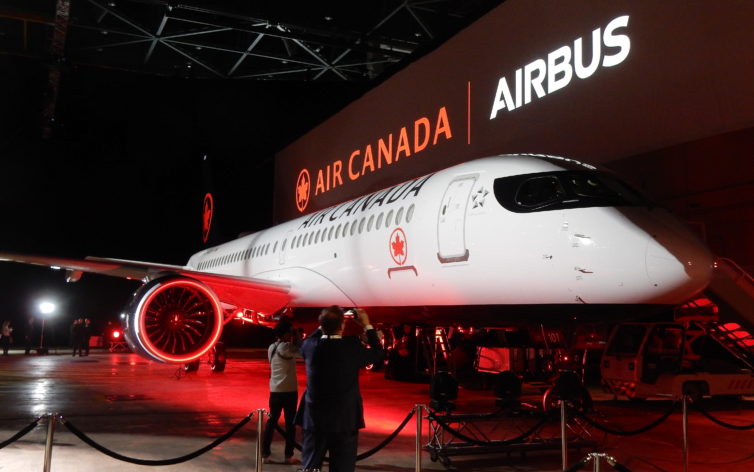
C-GROV, the first A220-300 operated by Air Canada – Photo: John Jamieson
On January 15th, North America’s fifth-largest airline became the newest operator of the Airbus A220. At Air Canada’s headquarters in Montreal, Fin 101 (C-GROV) was unveiled to employees, honored guests, and members of the media. Over the course of the event, we were able to go onboard the aircraft and take in the A220’s unique features. We also managed to interview Mark Galardo, Air Canada’s VP Network Planning.
With the focus of the event firmly on the aircraft (as opposed to a new destination), we’ve focused our analysis on the physical benefits. That said, we’ll have a thorough examination of the aircraft’s operational benefits, and our interview, in a future post. For now, follow along as we cover Fin 101 from nose to tail and explore every inch of Canada’s newest clean-sheet aircraft.
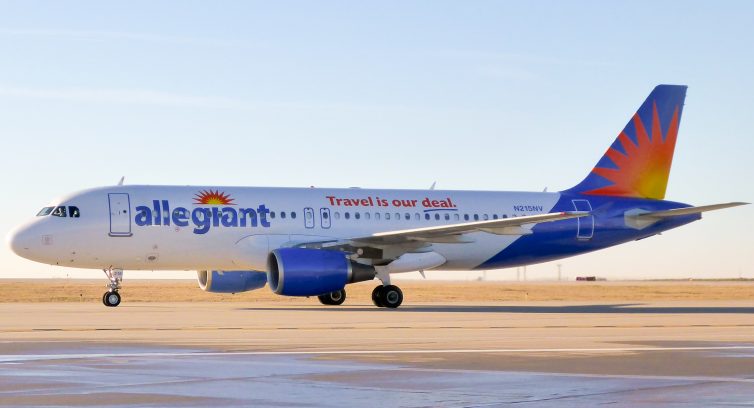
An Allegiant A320 in the current livery, seen at Kansas City International – Photo: C.T. Thongklin
Late last month Allegiant announced plans to acquire twelve new Airbus A320s. Airlines make fleet announcements often, but this one was of particular significance for a number of reasons.
Allegiant’s order for new A320s:
First, this order for brand-new planes, direct from Airbus, signals a change in standard operating procedure for the Las Vegas-based ultra-low-cost carrier (ULCC). Historically, Allegiant had shirked the trend of its ULCC peers, both domestically and abroad, of adopting fuel-efficient, modern aircraft. Instead, the airline has had a well-known preference for less costly mid-to-late life secondhand McDonnell Douglas MD-80 series planes. Cheaper planes equate to lower fares, and higher margins. This concept is not new; many budget carriers have used that model and benefited greatly from it (some have not). Allegiant is no exception. The airline is so well known for this preference, in fact, that few realize that the airline began acquiring Airbus aircraft in 2013. I myself was surprised to learn that the number of available seat miles flown by Allegiant’s Airbus fleet is nearly tied with that of their larger McDonnell Douglas fleet. Jude Bricker, Allegiant Travel Company senior vice president of planning, confirms expectations that the Airbus fleet will tip the scales by the close of 2016.
Older, used Airbus planes are known for being attractively priced. This is something Allegiant saw as early as 2012 when the airline announced plans to acquire its first batch of A319s. Then-President Andrew C. Levy stated, “A319 asset values have significantly declined and now mirror the environment we saw when we first began buying MD-80s.” While Airbus has focused much of its attention on pushing its newer and higher priced NEO (new engine option) models, it seems existing Airbus variants and future current engine option (CEO) deliveries are well positioned to become as ubiquitous as the much loved, budget friendly, long-lived MD-80s they are slowly but steadily replacing.
Allegiant’s newest (employee-approved) livery iteration:
Alongside this announcement, the airline unveiled plans for an incremental livery modification. Two final contenders were chosen, and employees were given an option to vote on which would be adopted.
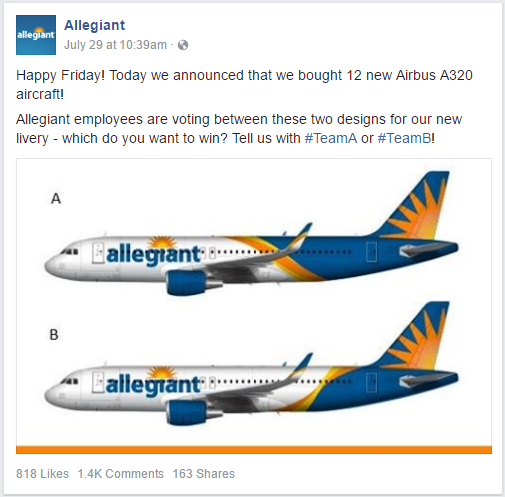
Allegiant announces A320 purchase and new livery candidates – Image: Allegiant’s Facebook
Which did the employees choose?
Last week I had the chance to check out American Airline’s newest aircraft — a Boeing 737-800 with Boeing’s Sky Interior. This is just one step in American renewing their fleet and brand.
The airline is currently in the process of replacing their aging MD-80 aircraft with new Boeing 737s. American plans to retire at least 25 MD-80s in 2011 and it is not exactly known when all MD-80s will be out of service. American will receive an additional 54 Boeing 737s with Sky Interior over the next two years (story continues below photos).
-
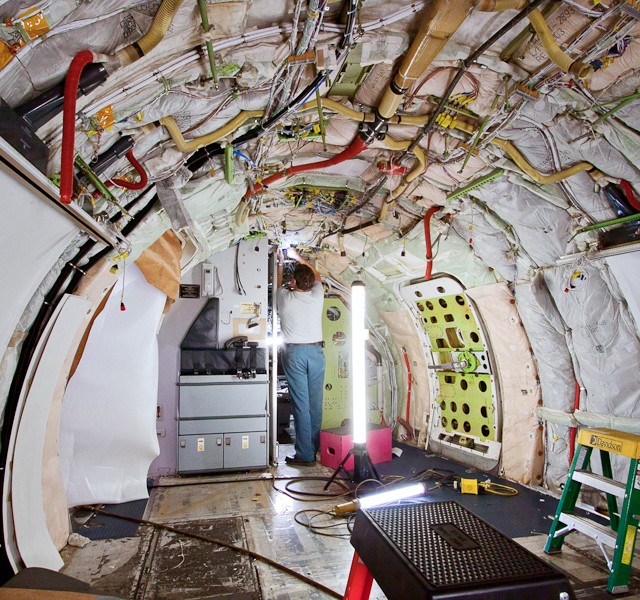
-
Inside the cabin of an American 737 being retrofitted.
-
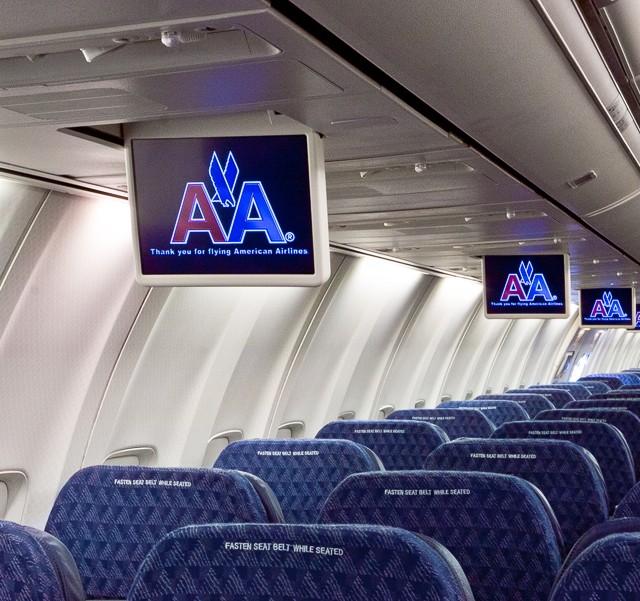
-
New pop down LCD screens are being in stalled.
-
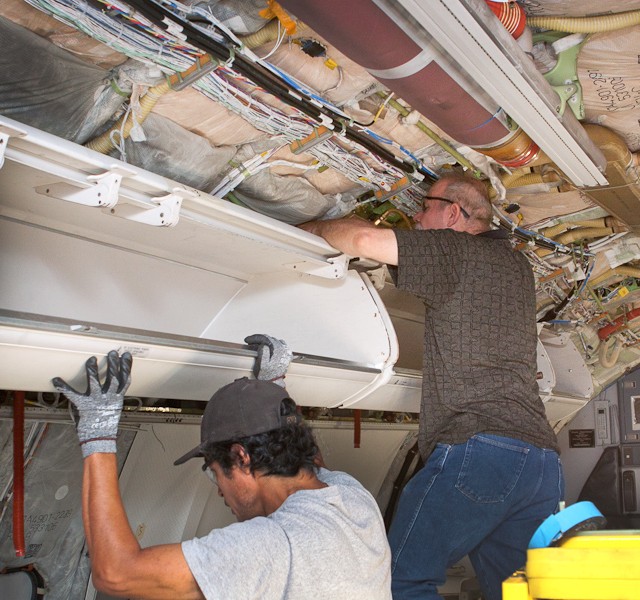
-
New bins are being in stalled on AA
-
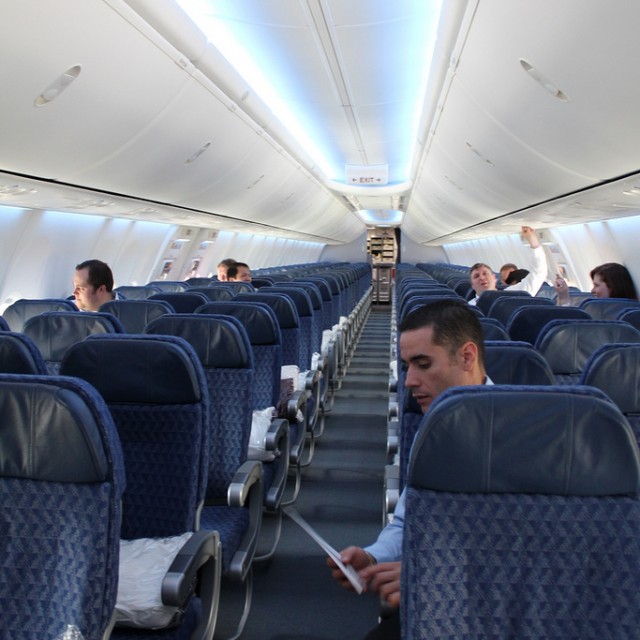
-
American’s new Sky Interior looks updated and clean.
Click photos for larger version. All retrofit photos by American, Sky Interior by Airline Reporter.
The airline plans to upgrade their older 737s to have newer seating and larger bins. In May 2010, American began updating its existing fleet of Boeing 737s. The retrofit includes the installation of new seats, new cabin interiors, updated in-flight entertainment systems and more storage throughout the aircraft. The retrofit is slated for completion by the first quarter of 2013. The retrofits will be handled in-house by American employees at the airline’s Maintenance & Engineering base located in Tulsa, OK.
Video: American Airlines Boeing 737 gets makeover
American is also in the process of updating all Boeing 757s used on domestic routes. Updates include the installation of new seats, new cabin interiors and updated in-flight entertainment throughout the aircraft. Also, First Class will receive two additional seats, which increases the number of First Class seats from 22 to 24 on each aircraft. The 757 aircraft enhancements began in August 2010 and have a planned completion of December 2015. As of early May 2011, American has completed upgrades to ten 757s.
American will also be increasing their fleet of Boeing 777s with the addition of five 777-300ERs with deliveries slated for 2012 and 2013. The -300ERs will supplement their -200ERs and will become the largest aircraft that American flies.
“American Airlines has made a significant investment to enrich the flying experience for our customers through the purchase of new aircraft and the refurbishment of our existing fleet,” said Virasb Vahidi, American’s Chief Commercial Officer. “At American, we are focused on providing a differentiated customer experience, with a distinct focus on best delivering what premium customers value most ’“ world-class products and services. The delivery of the first 737-800 with the new Boeing Sky Interior is our most recent step to deliver on this commitment.”
In the past, there have been times where I had serious concerns about American’s future. They had an aging fleet of aircraft and were not merging like other large airlines. They also had a lack of a solid presence on social media and really just weren’t as “fun” as other airlines. It appears that American realizes they need to change the way they do business to better compete against other airlines. American has already spent $5.5 billion in new aircraft, facility enhancements and on-board improvements between 2007 to 2011 and plans to spend more in the future.
American is trying very hard to stay relevant and hoping that customers will take notice of their effort. Will it be enough to survive without a merger? Only time will tell, but it seems American is on a positive track.






